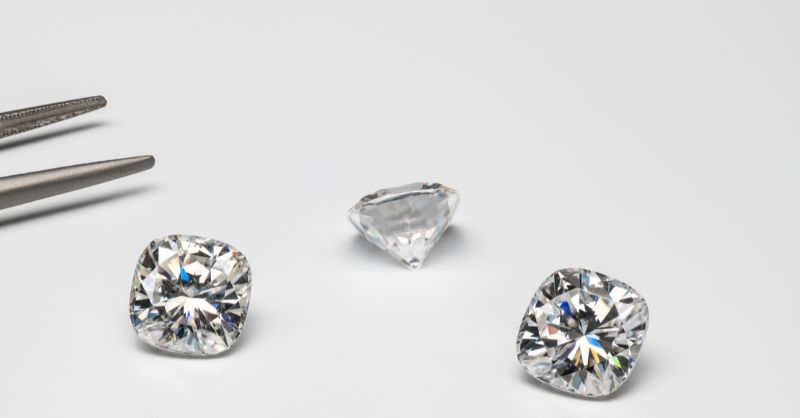Diamonds have long been considered one of the rarest and most coveted gemstones in the world. However, there is a common misconception that mined diamonds are scarce and difficult to obtain. In reality, the scarcity of diamonds is often exaggerated, and their supply is much more abundant than many people realize. In this article, we will explore why mined diamonds are not scarce, the factors that contribute to the price of diamonds, and how the diamond industry is evolving in response to changing consumer expectations.
The Abundance of Mined Diamonds
While it is true that diamonds are a natural resource, the idea that mined diamonds are scarce is not entirely accurate. The diamond mining industry produces millions of carats of diamonds every year. In fact, the global diamond supply has remained relatively stable for many decades, with new sources of diamond deposits being discovered regularly. This abundance of mined diamonds contradicts the notion that diamonds are rare and precious in the way that they are often marketed.
The primary reason for the perception of scarcity is the control that major diamond companies, such as De Beers, have had over the distribution and supply of diamonds. By regulating the flow of diamonds into the market, these companies were able to create a sense of scarcity, driving up demand and prices. However, with the emergence of alternative diamond sources and changing market dynamics, the truth about the abundance of mined diamonds is becoming more evident.
The Role of Marketing in Creating the Illusion of Scarcity
One of the key factors behind the misconception that mined diamonds are scarce is the powerful marketing campaigns that have shaped public perception for decades. The diamond industry, particularly through campaigns like De Beers’ “A Diamond is Forever,” has successfully convinced consumers that diamonds are rare and exclusive. This marketing has contributed to the idea that diamonds are a symbol of eternal love and commitment, which in turn increases their perceived value.
In reality, diamonds are not as rare as they are often portrayed. The vast majority of diamonds mined today come from well-established sources, and new mines are constantly being discovered. The rarity of diamonds is more a result of the controlled distribution of supply rather than an actual scarcity of the gemstone. By controlling how diamonds are presented and sold, the industry has been able to maintain the illusion of scarcity, which continues to influence consumer behavior.
The Economics of Diamond Pricing
While mined diamonds are not scarce, their price is still influenced by several factors, including demand, market trends, and the costs associated with mining. The price of diamonds is not solely determined by their rarity but rather by the economic principles of supply and demand. Since diamonds have been marketed as rare and valuable, the demand for them has remained high, particularly for engagement rings and luxury jewellery. This sustained demand, combined with the limited availability of certain diamond cuts and sizes, helps to maintain high prices.
However, the cost of producing diamonds is not as high as many consumers believe. Advances in mining technology and the discovery of new diamond deposits have made it more cost-effective to extract diamonds from the Earth. Additionally, the emergence of synthetic diamonds and the growing popularity of lab-grown diamonds have provided consumers with more affordable alternatives. These factors have led some to question whether the price of mined diamonds is truly justified, given their relative abundance in nature.
The Impact of Synthetic Diamonds on the Perceived Scarcity of Mined Diamonds
In recent years, the rise of synthetic and lab-grown diamonds has further challenged the notion that mined diamonds are scarce. Lab-grown diamonds are chemically identical to natural diamonds and are created using advanced technology that replicates the high-pressure, high-temperature conditions found in the Earth’s mantle. These diamonds are produced in controlled environments and offer a more affordable and sustainable alternative to mined diamonds.
As the availability of lab-grown diamonds increases, the perception of scarcity in mined diamonds is gradually diminishing. lab made diamonds are often sold at a fraction of the price of their mined counterparts, providing consumers with a choice that was once unavailable. This shift in consumer preferences is forcing the diamond industry to reevaluate its pricing structures and the concept of scarcity that has long defined the market.
Mined Diamonds and Their Environmental Impact
While mined diamonds are not scarce, the environmental impact of diamond mining is a growing concern. The extraction of diamonds from the Earth requires extensive mining operations, which can lead to deforestation, habitat destruction, and pollution. As the demand for diamonds continues to grow, so does the environmental toll of diamond mining. This has led to calls for more sustainable practices within the industry, as well as a push for greater transparency in the sourcing of diamonds.
The rise of ethical and eco-conscious consumerism has prompted many people to seek alternatives to mined diamonds. Lab-grown diamonds, which are produced in a more environmentally friendly manner, have become increasingly popular as consumers look for ways to reduce their ecological footprint. The environmental impact of diamond mining, coupled with the growing availability of synthetic diamonds, has made the idea of mined diamonds being scarce seem less relevant to modern consumers.
The Future of the Diamond Industry
Looking ahead, the diamond industry is likely to continue evolving in response to changing consumer attitudes and the growing availability of alternatives. As mined diamonds are not scarce, the market for these gemstones may face new challenges, particularly as lab-grown diamonds gain market share. The traditional diamond industry will need to adapt by embracing sustainability, transparency, and new technologies to remain relevant in an increasingly competitive market.
While mined diamonds will continue to play a role in the luxury jewellery market, the perception of scarcity is unlikely to hold the same weight it once did. Consumers are becoming more informed about the realities of diamond production and are seeking alternatives that align with their values. As synthetic diamonds continue to improve in quality and availability, the dominance of mined diamonds in the jewellery market may diminish over time.
Conclusion
In conclusion, the belief that mined diamonds are scarce is largely a result of marketing tactics and the controlled distribution of supply by major players in the diamond industry. While diamonds are not as rare as they are often portrayed, their price remains high due to demand, perceived value, and the costs associated with mining. However, with the rise of synthetic diamonds and growing concerns over the environmental impact of mining, the concept of diamond scarcity is gradually being reevaluated. As consumers become more informed and environmentally conscious, the diamond industry will need to adapt to the changing landscape, offering more sustainable and affordable alternatives without relying on the illusion of scarcity.









